-
Kenneth F. Swaiman, MD [1931 - 2020]
It is with great sadness that the ICNA announce the passing of Kenneth Swaiman, MD, the founder and first president of the Child Neurology Society, Child Neurology Foundation, and the Professors of Child Neurology, original author and continuing editor of Swaiman’s Pediatric Neurology, and founding editor of the journal, Pediatric Neurology.
IN MEMORIAM: KENNETH FRED SWAIMAN, MD
(November 19, 1931 - September 18, 2020)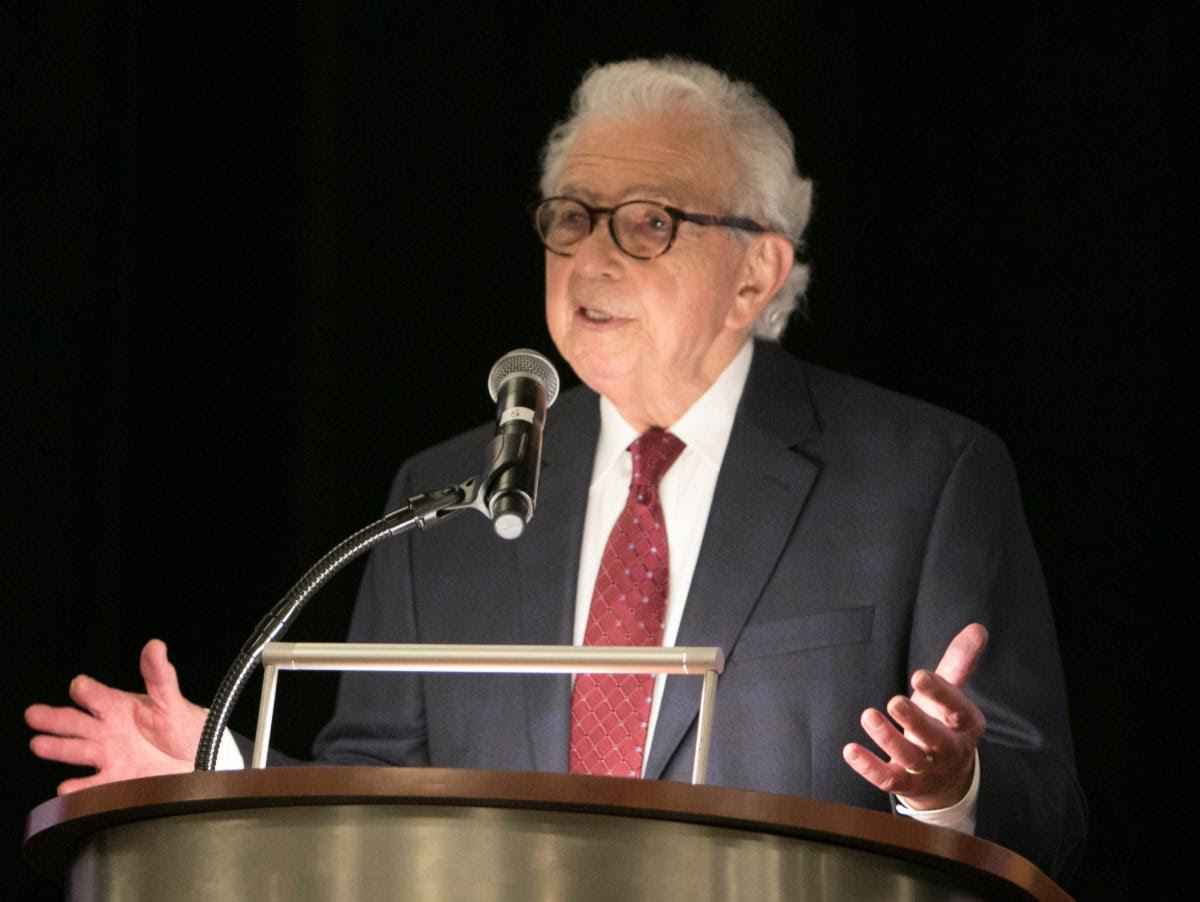 Ken Swaiman was a visionary who has played a universally recognized, pivotal and remarkable role in the development of child neurology. He initiated the founding of the Child Neurology Society, the Professors of Child Neurology and the Child Neurology Foundation, and the publication of what is regarded as the primary textbook in the field, Pediatric Neurology: Principles and Practice. He began the journal, Pediatric Neurology, one of the major pediatric neurological journals and served as its editor from 1984-2012. For these and many other accomplishments, Ken was honored by the Child Neurology Society at the 2017 Legacy Reception.
Ken Swaiman was a visionary who has played a universally recognized, pivotal and remarkable role in the development of child neurology. He initiated the founding of the Child Neurology Society, the Professors of Child Neurology and the Child Neurology Foundation, and the publication of what is regarded as the primary textbook in the field, Pediatric Neurology: Principles and Practice. He began the journal, Pediatric Neurology, one of the major pediatric neurological journals and served as its editor from 1984-2012. For these and many other accomplishments, Ken was honored by the Child Neurology Society at the 2017 Legacy Reception.Ken, although born in St. Paul (1931), was raised in Minneapolis, Minnesota. His Lithuanian parents, before meeting, separately immigrated to the United States, met in St. Paul, and moved to Minneapolis. Ken attended the University of Minnesota, earning degrees in Liberal Arts (Magna Cum Laude, 1952), Science (1953), and Medicine (1955) and then joined a rotating internship at the Minneapolis General Hospital (1955-56), followed by a Pediatric residency and Chief residency at the University of Minnesota Hospitals (1956-58). This was followed by two years as Chief of Pediatrics at a US Army Hospital (Ft. McPherson, GA). He returned to Minnesota where he was an NIH-sponsored ‘Special Fellow in Pediatric Neurology’ (1960-63) under the mentorship of Dr. A.B. Baker, one of the founders of the American Academy of Neurology (1948). Ken received board certifications from the American Board of Pediatrics (1960), the American Board of Psychiatry and Neurology (1966) and the American Board of Psychiatry and Neurology, with Special Competence in Child Neurology (1969).
Ken joined the Pediatric and the Neurology faculties at Minnesota (1963) and within a decade became a full Professor in both departments. He was Director of the Pediatric Neurology Training Program and Director of Pediatric Neurology (1972), serving in those capacities until 1998. During his career, Ken belonged to 20 professional organizations. He engaged in basic science research: GABA and phenylalanine metabolism, metabolic abnormalities in pediatric neuromuscular conditions, the effects of malnutrition on the developing brain, and clinical disorders, including acid maltase deficiency, sea blue histiocytosis and the effects of iron and other metals on cerebral energetics. Ken’s interest in clinical teaching and research investigation, and transmitting this information to the trainees in his program and worldwide, was always in the forefront of his thoughts. He held leadership positions in key child neurology organizations, including the Child Neurology Society (CNS, First President 1972-1973), International Child Neurology Association (Executive Committee 1970-1979), Professors of Child Neurology (PCN, First President 1978-80) and the Child Neurology Foundation (CNF, First President 2000-2003). Ken was also on many National Institutes of Health Study Sections and has shared his knowledge as a visiting professor giving over 50 special lectures throughout the United States and in many countries worldwide.
Trainees and Awards. Ken served on 15 editorial boards of major scientific journals. He also served as a board examiner for the American Board of Psychiatry and Neurology. He has received numerous awards, with the three most prestigious being the Hower award (1981), the highest award given by the CNS to an individual who is highly regarded as an outstanding teacher and scholar, and additionally, has given a high level of service to the CNS, the Founder’s Award at the 25th anniversary meeting of the CNS (1996), and the American Academy of Neurology Lifetime Achievement Award for Neurologic Education (2005).
During his tenure at Minnesota, Ken trained over 80 child neurologists and he felt that contact with his residents was one of his prime motivating forces for beginning all of the organizations that he started. He felt that the role of teacher and mentor was the most important responsibility that a faculty member can have. His trainees came from all over the world and went on to provide continuing education in the U.S. and in their home countries.
Child Neurology Society. The first Accreditation Council for Graduate Medical Education (ACGME) specialty board devoted to individuals with neurological and psychiatric disorders, the American Board of Psychiatry and Neurology (ABPN), was established in 1934. Another 34 years elapsed before Child Neurology was recognized as a distinct neurology subspecialty (American Board of Psychiatry and Neurology, with Special Competence in Child Neurology, 1968). Having long recognized the uniqueness of child neurology, Ken gathered together a small group of senior Midwest pediatric neurologists in 1971 and the following year, he founded the CNS (1972), holding the first meeting at the University of Michigan. There, the Society was incorporated, by-laws were created, an Executive Board was formed, and plans were made to hire administrative staff. The formation of the CNS was a major force in the expansion of Pediatric Neurology training programs, and many more medical students and residents decided to pursue a career in pediatric neurology.
Professors of Child Neurology. The Association of University Professors of Neurology (AUPN), one the principal organizations involved in the training of neurologists, held its first meeting in 1968 to address training, legislative, workforce and research funding issues and to serve as a liaison with many organizations. Realizing the importance of having a parallel organization for academic child neurologists, Ken founded the PCN with the help of Bruce Berg (1978), with Ken serving as its first President. The PCN meets at the CNS annual meeting and serves many roles including support of training programs, program directors, coordinators and residents, as well as serving as the interface with multiple other organizations (CNS, ACGME and ABPN). Ken was a tireless advocate for improving the quality of pediatric neurological education, the advancement of the field, and the means to increase the knowledge and capability of pediatric neurologists.
Child Neurology Foundation. Ken founded the CNF in 1999, recognizing the need to support the outreach of child neurologists and support of families and children with neurological disorders. He was the CNF’s first President and he was instrumental in securing the resources to start the organization’s Researcher in Training and Scientific Awards. Such was the trust in the future of the Foundation that significant industry support was obtained through Ken’s and Roy Elterman’s efforts. More recently, the CNF redirected its efforts to focus on the needs of families and children, and it conducts unique symposia at the annual CNS meeting.
 Pediatric Neurology: Principles and Practice. The first textbook solely devoted to the entire field of Child Neurology appeared in 1845 (Ludwig Mauthner). Over the ensuing century, additional monographs were written by Bernard Sachs (1895), James Taylor (1905), Martin Theimich and Julius Zappert (1910), Ludwig Bruns (1912), George Peritz (1912), Bronson Crothers (1926), and Frank Ford (1937). For a variety of reasons, comprehensive texts devoted to the field did not appear until that of John Menkes (1974), the first edition of the book by Ken Swaiman and Frank Wright (1975) and the textbook by Jean Aicardi (1992). The book, “The Practice of Pediatric Neurology,” edited by Ken and Frank Wright and the subsequent 1982 edition were internationally acclaimed. Ken then became sole editor of the next edition (1989) when the title changed to “Pediatric Neurology: Principles and Practice,” with subsequent editions published in in 1994, 1999, 2006, 2012 and 2017. As the book grew in size and coverage, additional editors joined Ken: Steve Ashwal (1999), Donna Ferriero (2006), Nina Schor (2012), and Andrea Gropman, Richard Finkel, Phillip Pearl, and Michael Shevell (2017). The growth of the discipline is documented by the fact that the number of pages and chapters has grown greatly: from 40 chapters/1,082 pages in 1975 to 170 chapters in 2017 (online version of >3,500 pages; shortened print version of 1432 pages).
Pediatric Neurology: Principles and Practice. The first textbook solely devoted to the entire field of Child Neurology appeared in 1845 (Ludwig Mauthner). Over the ensuing century, additional monographs were written by Bernard Sachs (1895), James Taylor (1905), Martin Theimich and Julius Zappert (1910), Ludwig Bruns (1912), George Peritz (1912), Bronson Crothers (1926), and Frank Ford (1937). For a variety of reasons, comprehensive texts devoted to the field did not appear until that of John Menkes (1974), the first edition of the book by Ken Swaiman and Frank Wright (1975) and the textbook by Jean Aicardi (1992). The book, “The Practice of Pediatric Neurology,” edited by Ken and Frank Wright and the subsequent 1982 edition were internationally acclaimed. Ken then became sole editor of the next edition (1989) when the title changed to “Pediatric Neurology: Principles and Practice,” with subsequent editions published in in 1994, 1999, 2006, 2012 and 2017. As the book grew in size and coverage, additional editors joined Ken: Steve Ashwal (1999), Donna Ferriero (2006), Nina Schor (2012), and Andrea Gropman, Richard Finkel, Phillip Pearl, and Michael Shevell (2017). The growth of the discipline is documented by the fact that the number of pages and chapters has grown greatly: from 40 chapters/1,082 pages in 1975 to 170 chapters in 2017 (online version of >3,500 pages; shortened print version of 1432 pages).The journal, ‘Pediatric Neurology’. Although there were several journals that covered neurological disorders, it was in 1951 that the first issue of Neurology, the official journal of the American Academy of Neurology (AAN) appeared. Then, in 1975, the American Neurological Association founded the Annals of Neurology. Shortly thereafter and with a certain degree of debate and controversy, the CNS became co-sponsors of the Annals, with all society members getting a subscription to the Annals as part of their dues. Ken described in detail the process that led to his decision to develop a journal solely devoted to child neurology and within several years (1985), “Pediatric Neurology” appeared. The journal has grown remarkably, receives many contributions from all over the world and has a high impact factor. Ken continued as Editor-in-Chief until 2012 and in 2013, he turned over this position to Steve Roach who has maintained the high standard of the journal, with a steadily rising impact factor.
The word ‘retirement’ was not in Ken’s lexicon. He continued to attend CNS meetings, maintained close contacts with leaders of the CNF and was Editor and co-author of chapters in the 2017 edition of the reference text that he began
More than any other modern-day neurologist, Kenneth Swaiman has led the way in establishing the field of child neurology. He has served as the most lustrous academic beacon in the CNS. To hundreds of academicians, he has shown the way in patient care, teaching, research and scholarship and, in that way, has bettered the lives of tens of thousands of children with neurological disorders. No one has come close to Ken in establishing the academic origins and growth of Child Neurology. Through his years of tireless work and productivity, Ken has consistently exuded great warmth, a dazzling smile, and an infectious laugh. He has inspired countless others to reach for lofty goals, inspired by Ken’s many legacies.
Ken and his wife of 35 years, pediatric neurologist Phyllis Sher, alternated their residences between Minneapolis and Tucson. Phyllis was a past member of the Executive Committee of the CNS, taught at the University of Miami Medical School, the University of Minnesota Medical School and did research at the NIH. While in Arizona, she taught at the University of Arizona School of Medicine, returned to her artistic background and is an accomplished painter. Ken received unswerving support from Phyllis during his last of several illnesses, sharing their deep love as Ken reflected on his life, a life so well lived. In addition to Phyllis, Ken is survived by children, Lisa Swaiman (Jim Grossman), Jerrold Swaiman, Barbara Swaiman (Mark Franklin), and Dana Hoberman (Bruce); and grandchildren, Isaac Swaiman, Sarah Grossman, Ethan Swaiman, Danielle Swaiman, Sawyer Franklin, Ryan Franklin, Jordan Hoberman and Benji Hoberman; and great grandson Everett Swaiman.
Submitted by longtime colleagues and friends,
Stephen Ashwal, MD
N. Paul Rosman, MDSource:Child Neurology Society,United States
-
Michael V Johnston [1946 - 2022]
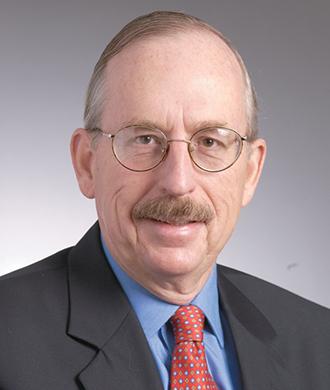
 I am deeply saddened to learn that Michael V Johnston MD. Professor Emeritus of Pediatrics and Neurology at the Johns Hopkins University School of Medicine and former Chief Medical Officer and Executive Vice President at the Kennedy Krieger Institute, Baltimore, passed away on July 30, 2022. Dr Johnston (Mike) was a very active and cherished member of the ICNA and served on the executive board for two terms. He was a brilliant academician and researcher and his seminal work on the role of glutamate and excitotoxicity in hypoxic ischaemic injury and its effects on the developing brain is well known internationally. A great mentor, he was very supportive and patient, and was admired by all his mentees. He collaborated with clinicians and researchers and continued to treat patients with complex neurological disorders.
I am deeply saddened to learn that Michael V Johnston MD. Professor Emeritus of Pediatrics and Neurology at the Johns Hopkins University School of Medicine and former Chief Medical Officer and Executive Vice President at the Kennedy Krieger Institute, Baltimore, passed away on July 30, 2022. Dr Johnston (Mike) was a very active and cherished member of the ICNA and served on the executive board for two terms. He was a brilliant academician and researcher and his seminal work on the role of glutamate and excitotoxicity in hypoxic ischaemic injury and its effects on the developing brain is well known internationally. A great mentor, he was very supportive and patient, and was admired by all his mentees. He collaborated with clinicians and researchers and continued to treat patients with complex neurological disorders.Along with his friend and colleague, Dr Gary Goldstein, he spearheaded the Kennedy Krieger Institute for 31 years, into an Institution known for cutting edge research and for providing state-of-the-art management to children with neuro-developmental disorders. He published hundreds of research papers and gave numerous invited lectures across the world. He received several awards and honours including the Frank Ford Lecture award of the ICNA (2016), the Blum/ Moser Endowed Chair for Paediatric Neurology at the Kennedy Krieger Institute and the Bernard Sachs Award from the Child Neurology Society.
I had the privilege of being one of the many people whose lives he touched. I was closely associated with him since 1991 when I worked with him at the Kennedy Krieger Institute. Subsequently he visited our Institution -The Post Graduate Institute for Medical Education and Research Chandigarh, India, as a visiting Professor and an invited speaker periodically. He had qualities of the head and heart both! Despite his several professional accomplishments, he was such a humble, caring, and friendly person and a truly devoted family man. Both, he, and his wife Sally, loved music, hosted many friends, and went out of their way to help people. He is survived by his loving wife Sally, three sons and their wives, and eight lovely grandchildren. Mike will be missed not only by the ICNA community, but by Paediatric Neurologists all over the world.
Pratibha Singhi
Secretary and President Elect
ICNAAlso see:
Michael VanDoren Johnston, M.D. Obituary
Michael V. Johnston, M.D., Professor Emeritus of Pediatrics and Neurology at Johns Hopkins University School of Medicine and former Chief Medical Officer and Executive Vice President at the Kennedy Krieger Institute, passed away peacefully at home in Baltimore on July 30, 2022. The cause was pancreatic cancer.
Dr. Johnston (“Mike”) was born January 30, 1946 in Pittsburgh, and raised in Christiana, a small town outside of Lancaster, Pennsylvania. His father, Eugene, was a physician and his mother, Naomi, was a nurse. Together Mike’s parents ran a general practice out of their home. From a young age, Mike wanted to be a doctor and would accompany his father on house calls to patients living on the farms that surround Christiana. Many of his father’s patients were Amish, and Mike helped build a hitching post in front of the home office to allow them to secure their horses and buggies during visits.
After graduating as Valedictorian from Octorara High School in 1963, Mike went on to Franklin and Marshall College in Lancaster. It was there that he met the love of his life and future wife, Susan (“Sally”) Johnston, who had traveled to Franklin and Marshall from Chatham College in Pittsburgh as part of a visiting choir to sing the opera, Dido and Aeneas. Mike and Sally liked to say that their love of music brought them together, and Mike was a lifelong lover of opera music. Mike and Sally were married in 1968 in Pittsburgh where Mike was attending medical school at the University of Pittsburgh School of Medicine. Dr. Johnston graduated from medical school in 1971, first in his class, and he and Sally then moved to Baltimore for his internship and residency in Pediatrics at The Johns Hopkins University School of Medicine. After completing his pediatrics residency, Dr. Johnston was drafted into the U.S. Army and served two years working for the U.S. Army Office of the Surgeon General in Washington, D.C. He then returned to Johns Hopkins in 1976 for residency in Neurology. Dr. Johnston was drawn to pediatric neurology because he was fascinated by the brain and saw enormous potential in the field for new discoveries. It was during this time that he worked in the laboratory of Dr. Joseph T. Coyle, where their work resulted in the discovery of the role of the nucleus basalis in the developing brain. In 1980 Dr. Johnston started his first faculty position at the University of Michigan Medical School. During his time in Ann Arbor, Dr. Johnston conducted pivotal research into the role of glutamate in hypoxic ischemic brain injury and its effects on the developing brain. He was rapidly promoted, becoming a full Professor of Pediatrics & Neurology at the University of Michigan in 1987.
In 1988 Dr. Johnston returned to Baltimore to help lead the Kennedy Krieger Institute with his long-time friend and colleague, Dr. Gary Goldstein. This was his dream job. Kennedy Krieger allowed Dr. Johnston the opportunity to continue his research and collaborate with brilliant clinicians and researchers, while also continuing to treat patients. His patients often had rare and complex neurological disorders, but Dr. Johnston saw potential. With his knowledge and compassion, he endeavored to bring hope to these children and their families. Over 31 years at Kennedy Krieger Dr. Johnston helped grow the institution into a world leader in research and clinical care of children with neurologic and developmental disorders. Over his career Dr. Johnston published hundreds of peer-reviewed articles, chapters, and textbooks, and lectured around the world. He also mentored countless numbers of young researchers and clinicians and was generous with his time. In recognition of his achievements, he served on the American Board of Psychiatry and Neurology (ABPN) and served as the President of ABPN in 2007. He in addition received numerous honors and awards including the Bernard Sachs Award from the Child Neurology Society (2008), the Blum/Moser Endowed Chair for Pediatric Neurology at Kennedy Krieger Institute (2009), and the Frank Ford Lecture Award from the International Child Neurology Association (ICNA) (2015).
Aside from his professional career, Dr. Johnston was devoted to his family. He cherished every moment he was able to spend with his family on vacation in Rangeley, Maine, where he had vacationed with his family as a boy. Sally was a native of Yarmouth, Maine and from the time their three boys were little, Sally and Mike spent nearly every summer vacation in Maine, along with extended family. Dr. Johnston is survived by his loving wife of 54 years, Sally Johnston, his three sons, Peter, Jamie, and Joe, his daughters-in-law Cecilia, Kristin, and Jennie, and—the light of his life—his eight grandchildren, Elizabeth, Michael, Andrew, Ryan, Caroline, Eli, Scarlett, and Liam. His two siblings, David Johnston, M.D. and Marcia Johnson, predeceased him.
A Memorial Service for Dr. Johnston will be held on Saturday, August 20 at 11 a.m. at the Second Presbyterian Church, 4200 St Paul St, Baltimore, MD 21218. In lieu of flowers, memorial contributions may be made in his name to Kennedy Krieger Institute at www.KennedyKrieger.org/Tributes or direct your gift to the Office of Philanthropy, Kennedy Krieger Foundation, 707 N. Broadway, Baltimore, MD 21205.
-
Paul Casaer (1940 - 2020)
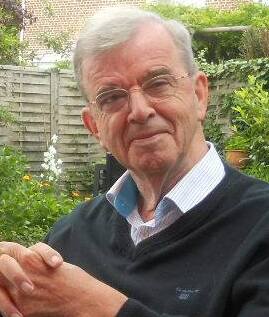 It is with great sadness that the ICNA announce the passing of Paul Casaer former ICNA President & Emeritus full Professor in Paediatrics-Paediatric Neurology, KU Leuven, on 30 July 2020.
It is with great sadness that the ICNA announce the passing of Paul Casaer former ICNA President & Emeritus full Professor in Paediatrics-Paediatric Neurology, KU Leuven, on 30 July 2020.Born 22 Sep. 1940, Ekeren Antwerp, Belgium Paul Casaer was the founding director of the department of Paediatric Neurology, of the Developmental Neurology research unit and of the Paediatric Rehabilitation Centre Pulderbos. Honorary director of the Children’s Hospital of the University Hospital Leuven. He was also the scientific advisor to the board of directors of the Marguerite Marie Delacroix foundation Brussels-Tienen (Belgium).
Professor Casaer was the Secretary General and President (1986-1990) of the ICNA-International Child Neurology Association. He also served on the EPNS Executive board for 12 years and was the EPNS President. Along with Victor Dubowitz he was the founding editor of the EJPN journal. Professor Casaer has numberous research publications, mainly related to perinatal and developmental neurology, to alternating hemiplegia and together with Jaak Jaeken the neurology of metabolic disorders.
-
Professor Yoichi Sakakihara
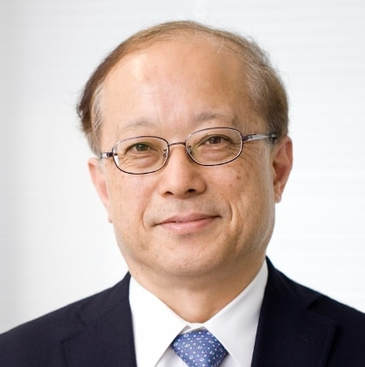
It is with profound sadness that we announce the passing of Professor Yoichi Sakakihara on March 29. As the former President of the Asian and Oceanian Child Neurology Association (AOCNA), he was a towering figure in the field of pediatric neurology, leaving an indelible mark on both our organization and the broader international community.
Robert Henry Albin Haslam [1936 - 2020]
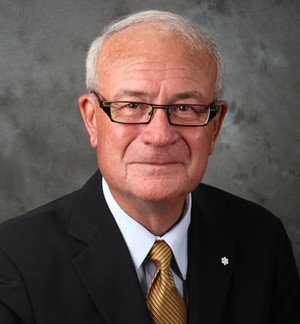 Robert Henry Albin Haslam [1936 - 2020]Dr. Robert (Bob) Henry Albin Haslam C.M., M.D., FAAP., FRCPC., DLitt(hon)
Robert Henry Albin Haslam [1936 - 2020]Dr. Robert (Bob) Henry Albin Haslam C.M., M.D., FAAP., FRCPC., DLitt(hon)
September 11, 1936 – March 30, 2020Husband, father, grandfather, brother, uncle, teacher, mentor, researcher, clinician and internationally renowned pediatric neurologist, Dr. Robert Haslam passed away peacefully while surrounded by the love of his life, wife Barbara, along with sons Robert, David, Christopher and daughter-in-law Darlene.
Robert Rust
The ICNA along with the global child neurology community mourns the passing of Professor Robert S. Rust, MD.
A towering figure in pediatric neurology, Dr. Rust was a true Renaissance man—a historian, physician, educator, mentor, scientist, ethicist, archivist, and humanitarian. His unparalleled contributions, intellectual brilliance, and compassionate nature have left an indelible legacy on the field of child neurology and the countless lives he touched. Dr Rust passed away on December 22, 2024 at his home in Virginia.
Werner Fritz Isler (1919 - 2002)
Werner Fritz Isler, Professor Dr med
(6 March 1919–30 January 2002), Ku¨snacht, Switzerland
Dr. Werner Fritz Isler, a former Professor of Pediatric Neurology at Universitäts-Kinderklinik Zürich and an honorary member of Gesellschaft für Neuropädiatrie, passed away suddenly on January 30, 2002, at the age of 82. He was a trailblazer in the emerging field of child neurology, significantly advancing the care of children with neurological disorders. His dedication extended to the education and training of future specialists in child neurology and the creation of specialized organizations at both regional and international levels.Dr. Isler began his career in neurosurgery at Zürich University under the guidance of Professor Hugo Krayenbühl, a pioneering figure in the field, and earned his specialist degree in neurosurgery in Switzerland. Although he did not continue in this field, he always identified as a neurosurgeon. In the early 1950s, he transitioned to the Children’s Hospital Zürich to work under Professor Guido Fanconi, who encouraged him to start EEG recordings in children. Dr. Isler learned EEG techniques from Rudolf Hess, an experienced epileptologist, and conducted the first EEG at Kinderspital in 1953. While the EEG division later flourished under Guido Dumermuth, Dr. Isler turned his focus to clinical child neurology.
In the 1960s, Dr. Isler skillfully performed neuroradiologic examinations, such as pneumoencephalography and cerebral angiography, which were rarely conducted in pediatric clinics at the time. Through these techniques and meticulous clinical neurological examinations, he identified 24 different causes in 116 cases of ‘acute infantile hemiplegia of obscure origin’ and detailed the dynamic processes involved, including cerebral edema, aneurysms, spontaneous thrombolysis, and progressive thrombosis. His extensive and original research on childhood hemiplegias was published as his habilitation thesis in German in 1969 and later in English as "Acute Hemiplegias and Hemisyndromes in Childhood" in 1971. This work included early cases of moyamoya disease in Caucasian children.
Dr. Isler was appointed Professor of Pediatric Neurology at Kinderspital Zürich in 1973, retiring in 1986. He organized the second meeting of the European Study Group of Child Neurologists in Zürich in 1975, where I had the pleasure of participating. He was honored as an Honorary Member by the Gesellschaft für Neuropädiatrie for his contributions to the field. From 1982 to 1986, he served as Treasurer of the International Child Neurology Association (ICNA), during which I had the honor of working closely with him as President of the ICNA.
I fondly remember our visits, including Werner and his wife Ursula's visit to Tokyo in 1980 for the 2nd International Symposium of Developmental Disabilities and his 1990 lecture at Tokyo Women’s Medical College on cerebral arterial occlusions in childhood. I also enjoyed visiting Kinderspital and his home in Zürich.
Dr. Isler's passing is a great loss, but his contributions to patients, colleagues, society, and child neurology will be remembered.
(Note: Professor Eugen Boltshauser assisted in preparing this manuscript.)
Yukio Fukuyama
Child Neurology Institute
6-12-17-201 Minami-Shinagawa
Shinagawa-ku, Tokyo 140-0004, JapanSource: Yukio Fukuyama. Werner Fritz Isler, Professor Dr med (6 March 1919–30 January 2002), Ku¨snacht, Switzerland. 2002 Brain & Development 24 (2002) 265
Upcoming Events
Join Our Newsletter
Why Join the ICNA?
